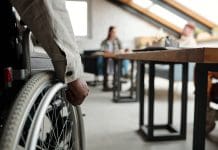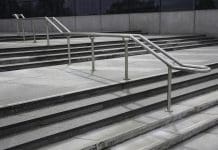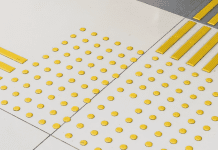Ian Streets of About Access discusses how accessibility improvements can be impacted financially by poor consultation process early on
A classic case of the cost of failing to make the right decisions at the design stage was at the heart of one of our recent projects.
We were invited to tender to carry out an access audit, but only because the client had been instructed to commission one by a judicial review.
Access audits
As part of the process we were not provided with all of the detail, for example why the judicial review had been conducted in the first place. Our client thought they were doing the right thing, and that leaving us in the dark would produce the unbiased report that they wanted.
It’s worth noting from the outset that our reports are always unbiased, as long as we are in possession of the facts we need.
The problems with the job became apparent only after we’d completed it. The client then asked us to go back, acknowledging they had not received the report they needed because their brief to us had been incorrect.
The requirement had changed because of third party concerns. The work was all about improvements to the public realm, which have been taking place in many towns and cities over the last few years.
The shared space concept has become popular, with different colours of materials used for different features of the street and visual contrast relied upon rather than kerbs to separate pedestrians from traffic. That requires careful consideration for the needs of disabled people, and awareness that requirements can change depending on the nature of the impairment.
A kerb example
An example relevant to this case is that kerbs can create problems for wheelchair-users, but they can be essential in helping someone who has a visual impairment to navigate their way around town.
What we didn’t know at the time we carried out our initial access audit was that an individual had taken the local authority to court over aspects of the development and the outcome was they’d had to undertake the consultation again.
The issue which prompted the legal action was the height of the kerbs throughout the scheme. It was completed with kerbs of 30mm and the applicant, a visually-impaired person, was seeking to have that increased.
Conventional kerb heights are 100–130mm. Guide dogs are familiar with that height and recognise they represent the dividing line between the footpath and the road.
To summarise the transcript from the proceedings, it’s clear there was consultation with disabled people and their representatives at the design stage of the project but it appears no one took issue with the 30mm height until later.
When concern was raised it was on the basis of a research paper commissioned by Guide Dogs for the Blind. There was dispute over whether the kerb height throughout the project had been mentioned in presentations, and the case took a predictable route with cost and delays being cited as reasons why the adjustments could not be made.
The allegations against the local authority which led to a lengthy and costly legal process included bias, flawed process, procedural unfairness and more. The one which stuck was the claim that the local authority had failed to perform its obligations under the Equality Act. The judge found that the councillors should have received advice on the equality aspect of the scheme, and that failing to do so was a breach of their equality duty.
They should have had a desk top design appraisal done and an access audit conducted based on the design before it was built, and this was the approach they took for the next phase of the scheme.
An important lesson
A key lesson to take from this is that if you are working on a major project, have a look at the features around the edges that can be dealt with at the same time. It may be that some of them were known to be inadequate, were left to be resolved as part of the next works project and have been presented as a valid reason for not making reasonable adjustments earlier.
We can’t determine what is reasonable – that’s for a court to decide – but we can tell people what needs to be taken into account. In this case there were several opportunities to address the issues, but they were overlooked.
Many thanks for reading this. If you liked it please click on Like and share it. Constructive comments are always welcome and if you have questions on the subject matter you can connect with me on LinkedIn and send me a message, or else you’ll find my contact details on my LinkedIn profile
If you need help improving the accessibility of your organization or to do more by improving your skills then please get in touch and check out our website
www.aboutaccess.co.uk













